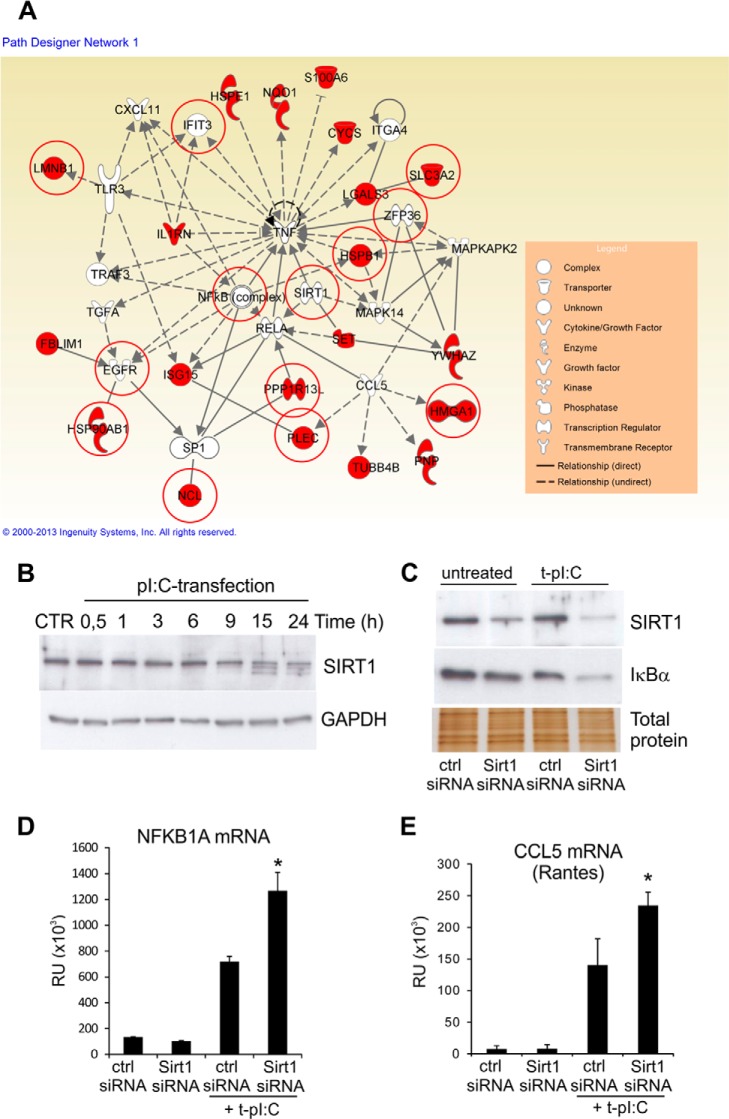Fig. 5.
SIRT1 negatively regulates dsRNA-induced NFkB transcriptional activity in human keratinocytes. A, the most significant network of 14-3-3 interacting proteins was related to cell death and survival, cell-to-cell signaling and interaction, and cell morphology. Molecules marked with red color have altered affinity to 14-3-3 proteins after dsRNA stimulation, and molecules with red circles are uniquely phosphorylated after dsRNA stimulation. Network analysis of 14-3-3 interaction proteins was made using IPA. B, HaCaT keratinocytes were transfected with pI:C for the indicated times, and the expression of SIRT1 was detected from cell lysate via immunoblotting. C, cells were transfected with control siRNA and SIRT1 specific siRNA molecules for 24 h before stimulation with cytoplasmic pI:C for 5 h, after which the expression of SIRT1 was detected. Silver stained gel was used to confirm the equal loading. D, E, cells were stimulated with cytoplasmic dsRNA for 5 h, and the effect of SIRT1 silencing on NFκB signaling was determined. Quantitative RT-PCR was used to measure the expression of NFκB1A mRNA (D), and immunoblotting was used to detect the degradation of inhibitor subunit IκBα (E). Quantitative RT-PCR data were obtained from two separate experiments. *p < 0.05 versus pI:C-transfected ctr-siRNA sample.

